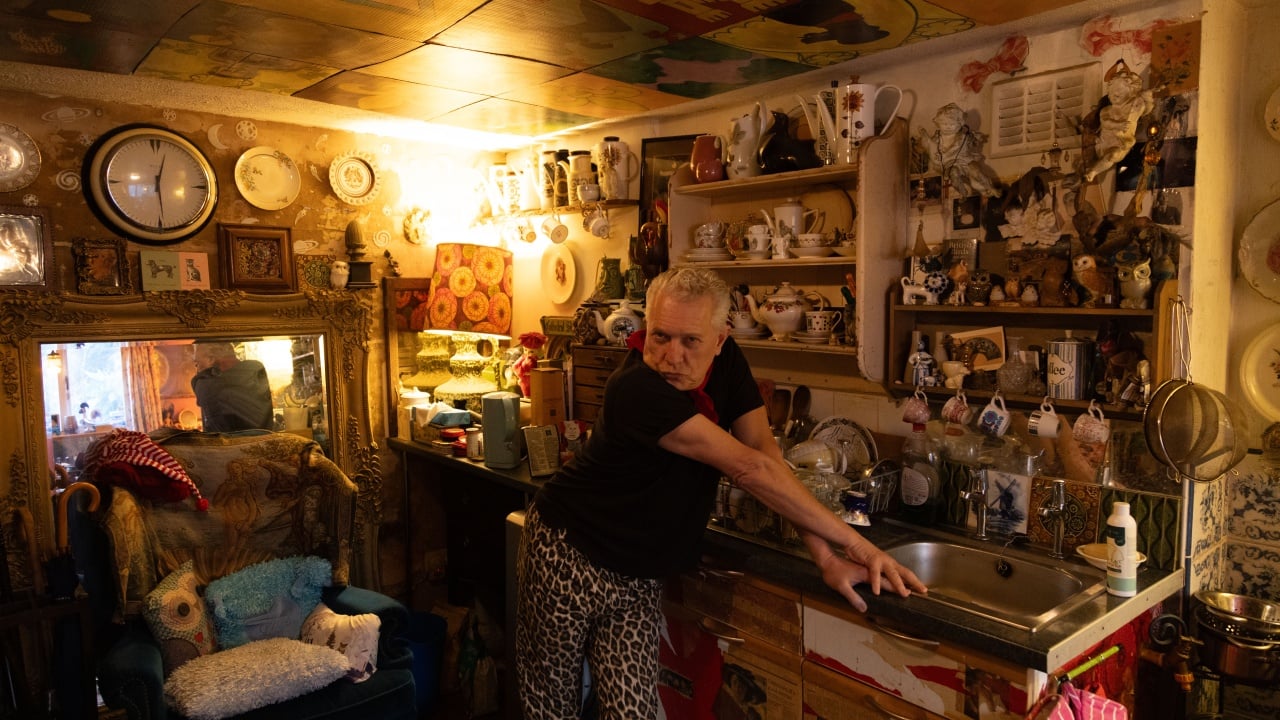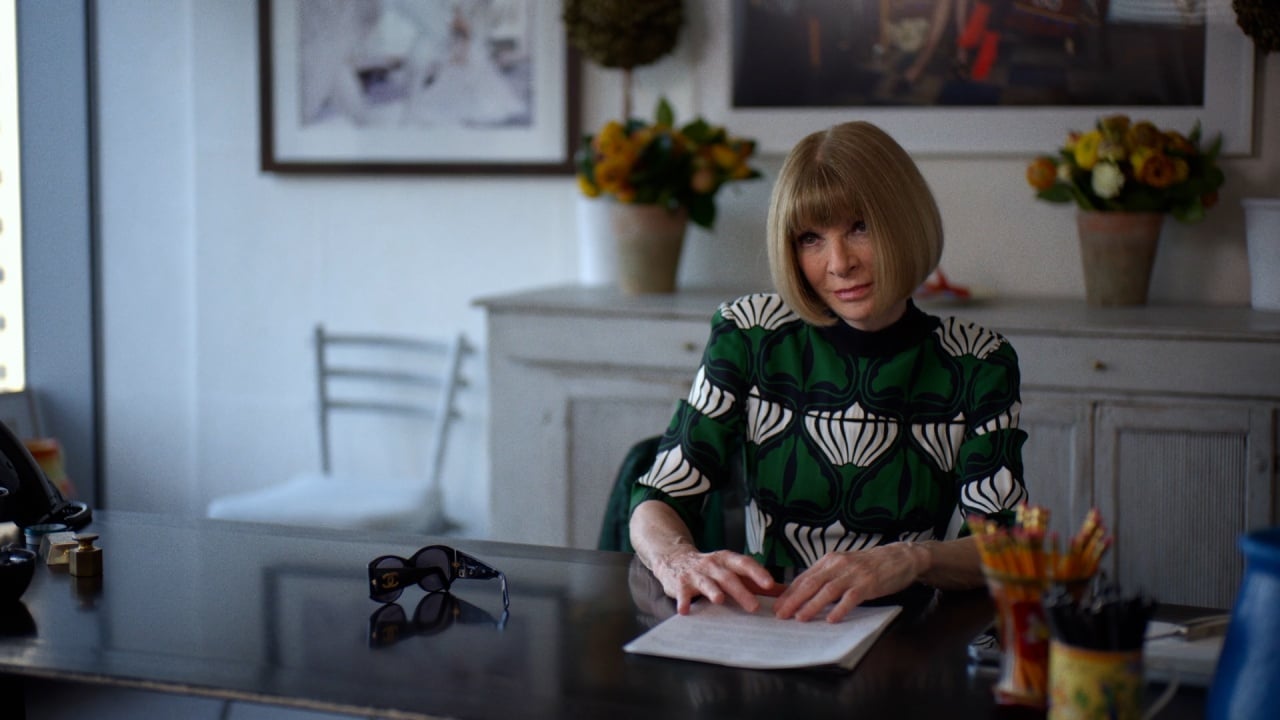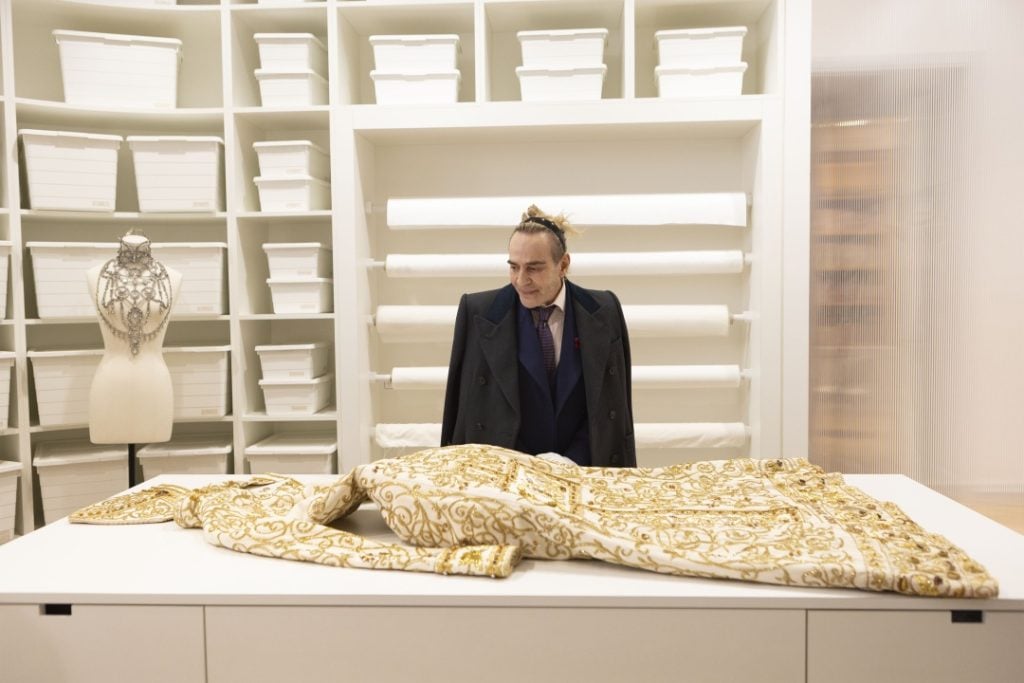John Galliano. A man whose name was once synonymous with the world’s biggest fashion houses in one fell swoop is made infamous following his anti-semitic tirades in Paris in 2010. The three separate incidents cost Galliano his illustrious career in fashion. But Galliano is making a comeback. He is the subject of Kevin Macdonald’s documentary High & Low – John Galliano which chronicles his ascent to fashion stardom, where he is crowned the creative director of Givenchy and then Dior. Galliano’s story is one soaked in talent, addiction and a penchant for the theatrical, and High & Low promises to answer why a man with a wealth of talent and opportunity commits career suicide and whether rehabilitation is possible.
High & Low opens with a creative and cruel juxtaposition that echoes the conflict in our subject’s mind. Through fast-moving colourful images of fashion shows and composer Tom Hodge’s trippy score, we not only see but feel the allure of this world. After taking us on this otherworldly journey, we are abruptly brought back to reality with video footage of Galliano, intoxicated, verbally abusing patrons of a Parisian cafe. His bigoted rhetoric continues to play over scenes of his artistic creations encouraging speculation as to why he would tank his successful career in such a hurtful and spectacular way.

We meet Galliano in the present day where he promises to explain why he said those terrible things by telling us his story from the beginning. Born Juan Carlos Antonio Galliano-Guillen in Gibraltar to an Italian father and a Spanish mother, he grew up in a devout Catholic family. At the age of six, they moved to South London. Galliano, by his own volition, describes his childhood as one plagued with identity issues, homophobia, religious pressure, parental abuse and dissociation. One startling memory is of his mother giving him wine as a child to encourage him to dance the flamenco. The impression is that Galliano is always meant to perform but needs a helping hand. Recalling a memory of playing with his mother’s make-up in the bathroom, Galliano recounts the fear and excitement of the possibility of being caught by his father. Galliano makes it clear that his father was abusive towards him.
He would eventually find escape during the 80s when he landed a prestigious place at St Martin’s College in London. Galliano emphasises that competition is fierce and through a grant he is able to attend and create. During his studies, his alcoholism does not go unnoticed but with Britain’s drink-obsessed culture, it is easy to brush off.
Obsessed with New Romance and theatre, Galliano infuses these themes and trends into his work. While his shows are legendary and daring, his haute couture fails to make money and in the beginning, Galliano is apathetic – he just wants to create. Any artist plagued with this burden will understand it is a beast that demands to be sated. High & Low suggests he is determined to satisfy this demand by embarking on a gruelling work schedule.

The film presents Galliano as a complicated individual. Testimonials from celebrity friends and professional colleagues confirm his talent and tenacity but also his misery and hostility. Friends describe him as a ‘’bad drunk’’, remarking on him urinating in public in a club and the frank realisation ‘’that guy’s unhappy’’. The language Galliano’s colleagues and friends use to describe his behaviour is frequently infantilising, strengthening the suggestion Galliano was enabled for much of his career. When they do not infantilise him, they deify him, even refusing to watch the damning footage that proves an intervention is desperately needed.
We hear from mental health professionals, including an addiction specialist, as well as Galliano’s sister who help paint a picture of who he is and how his addictions have affected his life. But we also hear directly from members of the public whom Galliano verbally and racially abused where they do their best to explain the lasting impact of having to give evidence in court. They are adamant that to this day they never received an apology and lament that their lives were ruined.
Forgiveness is a pivotal theme in this documentary, but there is a cloak of insincerity as Galliano insists he apologised to his victims but he is not convincing. It is noted that he made apologies to large organisations, but took seven years to apologise to Dior’s Jewish chief executive, Sidney Toledano, personally.

By the film’s end, Galliano’s goal is unclear and we are left with more questions than answers. In hindsight, perhaps Galliano sought his own public character assassination as a lurid means of escape from a demanding work schedule. Or, if his childhood memories reveal what they suggest, he enjoys creating controversy as this frightens and excites him. As a subject, he is complex and despite having aged it appears to be a young Juan steering the wheel.
Regardless, there is something to be said about the dangers of deifying those blessed with artistic genius and the harm caused by unresolved childhood trauma and enabled substance misuse. We get a glimpse into Galliano’s troubled upbringing but to be frank this does not explain or excuse what he did. Artists have a character outside of their trauma and talent but their actions are not above critique from those of us who consume their art.
High & Low – John Galliano is currently available to stream on MUBI and to rent or purchase on digital platforms.

High & Low opens with a creative and cruel juxtaposition that echoes the conflict in our subject’s mind. Through fast-moving colourful images of fashion shows and composer Tom Hodge’s trippy score, we not only see but feel the allure of this world.
-
GVN Rating 6
-
User Ratings (0 Votes)
0




![‘Swiped’ Review – A Sharp Biopic On Whitney Wolfe Herd And Sexism In Tech [TIFF 2025] ‘Swiped’ Review – A Sharp Biopic On Whitney Wolfe Herd And Sexism In Tech [TIFF 2025]](https://cdn.geekvibesnation.com/wp-media-folder-geek-vibes-nation/wp-content/uploads/2025/09/g_20cs_swiped_still_1_e58fe01b-300x168.jpeg)

![‘Sacrifice’ Review – Romain Gavras And Chris Evans Bravely Venture Into Celebrity Ego’s Comic, Volcanic Implications [TIFF 2025] ‘Sacrifice’ Review – Romain Gavras And Chris Evans Bravely Venture Into Celebrity Ego’s Comic, Volcanic Implications [TIFF 2025]](https://cdn.geekvibesnation.com/wp-media-folder-geek-vibes-nation/wp-content/uploads/2025/09/Sacrifice_STILL-2-300x142.jpg)